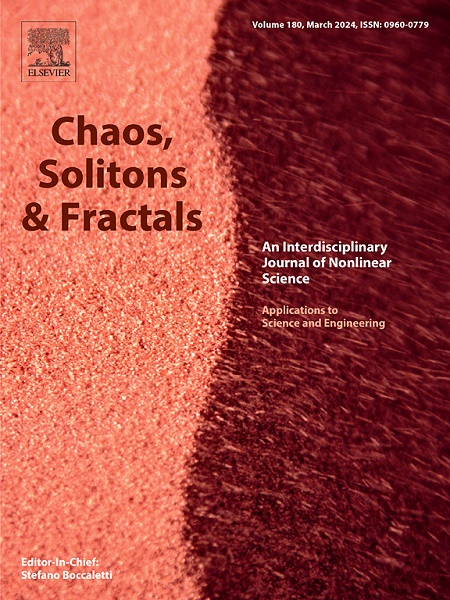受运动显著阈值调控的选择性相互作用的自推进粒子的集体运动
IF 5.6
1区 数学
Q1 MATHEMATICS, INTERDISCIPLINARY APPLICATIONS
引用次数: 0
摘要
我们提出了一个通过运动显著性阈值(MST)机制结合选择性相互作用的集体运动模型,其中粒子在响应重要运动线索的活跃状态和与局部平均方向一致的非活跃状态之间动态切换。这种选择性相互作用机制使粒子能够过滤掉微小的波动,同时保持对邻居运动状态有意义变化的敏感性。通过广泛的数值模拟和统计分析,我们揭示了这种基于阈值的选择从根本上改变了系统的集体状态及其相变的性质。当噪声强度变化时,较高的阈值有利于基于平均的动力学,从而促进鲁棒的集体秩序,从而导致二阶相变,这得到有限尺寸缩放分析的证实。相反,改变阈值本身在低噪声下会引起一阶转换,具有明显的滞后,随着噪声的增加,一阶转换会转变为连续转换。这些发现证明了基于运动阈值的选择性相互作用如何通过不同的动力机制塑造集体行为,丰富了我们对自组织系统的理解。本文章由计算机程序翻译,如有差异,请以英文原文为准。
Collective motion of self-propelled particles with selective interactions regulated by Motion Salience Threshold
We propose a collective motion model incorporating selective interactions through a Motion Salience Threshold (MST) mechanism, where particles dynamically switch between an active state responding to significant motion cues and an inactive state aligning with local average orientation. This selective interaction mechanism enables particles to filter out minor fluctuations while maintaining sensitivity to meaningful changes in their neighbors’ motion states. Through extensive numerical simulations and statistical analysis, we reveal that this threshold-based selection fundamentally alters both the system’s collective states and the nature of its phase transitions. When varying noise intensity, higher thresholds promote robust collective order by favoring averaging-based dynamics, leading to second-order phase transitions confirmed by finite-size scaling analysis. In contrast, varying the threshold itself induces first-order transitions with clear hysteresis at low noise, which transform into continuous transitions as noise increases. These findings demonstrate how selective interactions regulated by motion-based thresholds shape collective behavior through distinct dynamical mechanisms, enriching our understanding of self-organized systems.
求助全文
通过发布文献求助,成功后即可免费获取论文全文。
去求助
来源期刊

Chaos Solitons & Fractals
物理-数学跨学科应用
CiteScore
13.20
自引率
10.30%
发文量
1087
审稿时长
9 months
期刊介绍:
Chaos, Solitons & Fractals strives to establish itself as a premier journal in the interdisciplinary realm of Nonlinear Science, Non-equilibrium, and Complex Phenomena. It welcomes submissions covering a broad spectrum of topics within this field, including dynamics, non-equilibrium processes in physics, chemistry, and geophysics, complex matter and networks, mathematical models, computational biology, applications to quantum and mesoscopic phenomena, fluctuations and random processes, self-organization, and social phenomena.
 求助内容:
求助内容: 应助结果提醒方式:
应助结果提醒方式:


